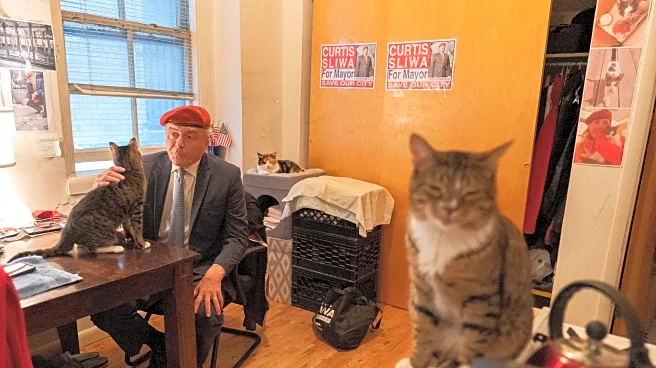What's Happening?
The Metropolitan Transportation Authority (MTA) has announced the expansion of its automated camera enforcement (ACE) program to four additional bus routes in Queens and the Bronx. Starting Monday, a 60-day warning period will be in effect for drivers improperly using busways or blocking stops on the Q6, Bx20, Bx3, and Bx7 routes. After this period, the MTA will issue fines ranging from $50 for a first offense to $250 for repeat violations. The ACE program, which began in June 2024, has already been implemented on 39 other routes, covering 510 miles and serving approximately 775,000 riders daily. The initiative aims to improve bus speeds, reduce collisions, and decrease emissions.
Why It's Important?
The expansion of the ACE program is significant for public transportation in New York City, as it aims to enhance the efficiency and safety of bus services. By reducing the number of vehicles blocking bus lanes and stops, the program has already led to a 5 percent increase in average bus speeds, with some routes experiencing up to a 30 percent improvement. Additionally, the initiative has contributed to a 20 percent reduction in collisions and a decrease in emissions by 5 to 10 percent. These improvements benefit daily commuters and support the city's efforts to promote sustainable transportation solutions.
What's Next?
Following the 60-day warning period, the MTA will begin issuing fines to violators, which is expected to further deter illegal parking and lane usage. The program's success may lead to further expansions, potentially covering more routes and increasing the number of buses equipped with ACE technology. Stakeholders, including the city's Departments of Transportation and Finance, will continue to monitor the program's impact and explore additional measures to enhance public transit efficiency and safety.
Beyond the Headlines
The ACE program not only addresses immediate traffic and safety concerns but also reflects broader urban planning and environmental goals. By improving public transportation infrastructure, the initiative supports New York City's commitment to reducing carbon emissions and promoting sustainable urban mobility. The program's success could serve as a model for other cities facing similar challenges in managing traffic congestion and enhancing public transit systems.











